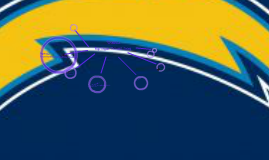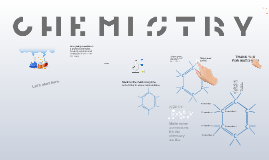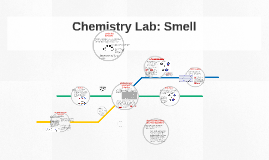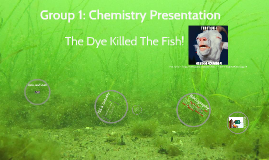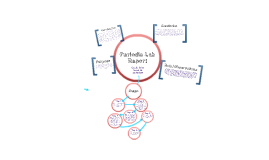Chemistry Lab
Transcript: Analysis of Colas Report //Goals// //Goals// To determine the concentration of phosphoric acid in a cola of unknown concentration using the application of the Beer-Lambert Law //Introduction// Introduction Concentration can be derived from wavelength and absorbancy as C1A1=c2A2 at constant wavelength This relationship can be expressed as a graph with absorbancy on the y-axis and concentration on the x-axis assuming a constant wavelength. Wavelength - the distance between tops of a wave. Change in wavelength corresponds to change in color and property of light Absorbancy - the amount of light that is stopped by the solution Transmittance rate - the amount of light that passes through the solution Concentration - the amount of substance present in a solution. Expressed as moles of substance/liters of solution. Wavelength, Absorbancy, and Concentration Wavelength, Absorbancy, and Concentration By creating a phosphoric acid solution with a known concentration and then diluting the solution multiple times we can create a graph of various concentrations and absorbancies at constant wavelength. Using the graph, we can derive the concentration of the unknown using the equation of the line. Graphing Beers Law Graphing Beers Law Example Beer's Law Graph By creating a known solution of phosphoric acid then diluting it, we can determine the concentration of phosphoric acid in a cola of unknown concentration Colas and Phosphoric Acid Colas and Phosphoric Acid //Procedure// #1 #2 #3 //Procedure// Determine the absorbancies and max wavelength of colored solutions Determine the absorbancies and transmittance rate of KMnO4 at standard molarity and serial dilutions Determine the phosphoric acid concentration of Coca-Cola classic using a known phosphoric acid solution of phosphoric acid and AVM. Overview Dispense the different colored water solutions into different clean cuvettes Colored Solutions: Red, copper, golden, kelly green, teal, royal blue, violet Using the Spec-20, calculate the absorbancies and transmittance at max wavelength Determining the absorbancies of colored solutions at its maximum wavelength Create a .00325 M KMnO4 Solution using 1 ml of KMnO4 and 99 ml of deionized water in a flask Dilute the solution 5 times, creating solutions of smaller and smaller molarity each dilution Dilutions: .0001625 M, .00008125 M, .000040625 M, .000020313 M Test the .00325 M KMnO4 solution and it's dilutions in the Spec-20 for it's absorbancies and transmittance rates Determining the absorbancies of KMnO4 at a standard molarity and it's dilutions Create a .001 M phosphoric acid solution using .034 grams of potassium monophosphate and 250 ml of deionized water. Combine the phosphoric acid solution with AVM solution in a 2:1 ratio. 250 ml of phosphoric acid solution was combined with 125 ml of AVM. Create a solution to be used as a blank by combining 25 ml of AVM with 50 ml of deionized water Create new of the phosphoric acid/AVM solution by combining 5 ml of phosphoric acid/AVM solution with increasing amount of AVM to create dilutions Dilutions: .0005 M, .00025 M, .000125 M, .0000625 M, .00003125 M Test the Dilutions at constant wavelength. Record the absorbancies for these wavelength. Create a graph of the absorbancies at the corresponding concentrations. Derive the equation for the trend line and the R^2 coefficient Determine the phosphoric acid concentration of Coca-cola classic using a stock phosphoric acid solution and its serial dilutions Create a dilution of coca-cola classic by diluting 4 ml of coca-cola classic in 96 ml of deionized water Create a blank of coca-cola classic by combining 5 ml AVM and 10 ml of deionized water Test the diluted coca-cola classic in the Spec-20 for absorbancy at the constant wavelength Use the equation of the trendline to derive the concentration of phosphoric acid in coca-cola classic Determining the Concentration of Coca Cola //Results// Results Colors:Absorbancy and Max Wavelength Colors:Absorbancy and Max Wavelength KMnO4 Concentration Absorbances and Transmisson at Max Wavelength KMnO4 Concentration Absorbances and Transmisson ... Absorbance Graph Absorbance Graph Transmittance Graph Transmittance Graph Absorbancies at Different Concentrations of Phosphoric Acid/AVM Solution Absorbancies at Different Concentrations of Phosphoric Acid/AVM Solution Constant Wavelength of 382 nm Graph of Absorbancies at Different Concentrations Graph of Absorbancies at Different Concentrations Concentration of Phosphoric Acid in Cola Concentration of Phosphoric Acid in Cola Cola Absorbancy: 1.58 Concentration of Cola = (1.58 = 4652.5x + .9548) * 2 Concentration of Cola = .00027 M Through the application of Beer's Law, we determined the concentration of phosphoric acid in Coca-Cola Classic using a stock solution of phosphoric acid and it's dilution. Using the data collected from the dilutions, we created a scatter plot. Using the equation of the trendline created by the scatter plot, we determined the






